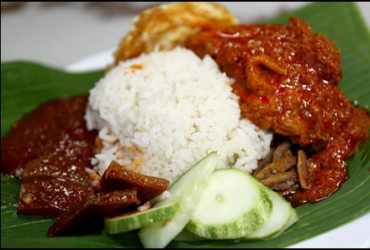A Sip to Change the World (Part 1)
By: Arham Jain
Introduction
Be it a cliché Valentine’s dinner, pulling an all-nighter for an important exam or a toast to the new year, no occasion is complete without the addition of a perfect liquid refreshment. Beverages not only provide a fun way to hydrate but also enhance the overall experience of a meal. Fast food is incomplete without the fizz of sodas and a fancy dinner would not be the same without wine to accompany it. That being said, beverages are more than mere sidekicks to our food. They have fueled great minds, sparked revolutions and radically changed economies. The first part of this blog follows how tea and coffee created a huge impact on our society.
Tea: From Hearth to Heart


“Each cup of Tea represents an imaginary voyage.”
From the halls of a sophisticated British household to the streets of India, from an elaborate ceremony room in Japan to the hills of Tibet, Tea has solidified its place as the beverage of choice around the world. According to a Chinese legend, Emperor Shen Nung’s servant was boiling water when some tea leaves fell into it. After the emperor tried the brew, tea was discovered.
Tea as a beverage began in the Sichuan and Yunnan provinces of China as a concoction of dried tea leaves, onion, salt, ginger and orange. It was meant as a medicinal drink aimed to cure several ailments such as stomach aches, skin diseases and sleepiness. As tea cultivation developed, it transformed the beverage into an enjoyable experience. It later spread across central Asia by trade via the silk road. Tea then made its way to Japan with the Buddhist monks. There it evolved into the centerpiece of a formal ceremony.
The first Europeans to reach China were the Portuguese, who traded via the port of Macau. Later the Dutch traders introduced tea to the rest of the continent, where it was ill-received due to its high price, unpleasant taste and reputation as a medicinal drink. But all this was going to change shortly as these humble leaves reached the isles of Britannia. The tea craze in Britain began after the marriage of King Charles II to the Portuguese princess Catherine of Braganza. Along with her luggage, the princess brought a casket of tea, her favorite beverage. It was her affinity for the drink that made it fashionable amongst the British elite class. It did not take long for the popularity of the drink to skyrocket after that.
To fuel that addiction the Honorable East India Company started to export massive quantities of tea directly from China. But the EIC had a problem at its hands, the Chinese did not want to trade for anything other than silver, which caused a trade deficit. By the 1700s the trade gap became so big that the EIC started to grow opium in the British-controlled territory of Bengal and trade it to China in exchange for tea. This led to the Opium Wars, which led to not only bloodshed and revolts but also the subsequent opening of Chinese ports and the legalization of opium. To add insult to injury, the EIC commissioned botanist Robert Fortune to sneak in, learn the method of tea preparation and steal tea plants. Not only did they manage to grow tea in the hilly areas of India, they even managed to List out-produce the Chinese.
Tea was such an important commodity that by the 17th century, Britain imported the equivalent of 1 kg of tea per person every year. The craze had also spread to the British colonies of New England, which consumed over a million pounds of tea every year. Suffering from heavy debts after the Seven Years’ War, the British increased taxes on tea which didn’t sit right with the Americans who opposed this by boycotting British tea. To help with proper collection of taxes the government sent an army leading to the Boston Massacre. On December 16th 1773, a group of patriots called the Sons of Liberty marched to the Boston harbor and threw nearly 340 chests of tea into the sea. This outraged the British Government which revoked the Massachusetts Charter, closed the port and sent 3000 more troops to occupy the city. Fearing they will share the fate of Boston, 56 delegates from the 13 colonies met at the first Continental Congress in Philadelphia, thus laying the groundwork for the American Revolutionary War and the subsequent birth of the United States.
“A cup of tea is a great excuse to share great thoughts with great minds.”
Coffee: Wars have been fought for less…


“I take my inspirational quote in a ceramic mug with a bit of creamer and sugar.”
A goat herder by the name of Khaldi bursts into a monastery and explains to the monks how he had seen his goats dancing and bouncing after eating a certain berry. He had tried the berries himself and he also got excited and started jumping. The monks, frightened by the man’s antics and this strange fruit, declare it as a trap of the devil and cast the fruit into a fire. As the fruit burns away and the bean roasts, it releases a pleasant aroma. The Abbott exclaims that nothing made by the devil could be so sweet. They take the beans out of the fire and submerge them in water, thus creating the first coffee beverage. Or as the story goes of the discovery of coffee in Ethiopia.
The roasting of the beans started when it spread to the port city of Mocha (in modern-day Yemen). The earliest adopters of the drink were the Sufi Mystics, who used it to fuel their late-night rituals. Since alcohol was forbidden by the Quran, it soon became the Islamic culture’s drink of choice. Due to the nature of brewing coffee, the coffee houses became a place to gather and socialize. But the story of coffee did not go forth without hiccups.
In 1511, the Governor of Mecca put coffee on trial and laid out evidence that it produced intoxicating effects and encouraged idleness. Many Muslim rulers, including Muran IV, mistrusted the coffee houses as they were often the source of political talks which created the risk of revolutions. Nonetheless, the popularity of the beverage won over the resistance and became a prized commodity to trade to the Venetian traders, who soon distributed coffee throughout the European continent.
Though even in Europe, coffee’s scandalous aura continued to dissuade people. However, Pope Clement VIII took a liking to the bitter concoction, which gave it papal approval. This was only the beginning of its popularity. It did not take long for Europe to be swept by Coffee houses, often termed “Penny Universities” in England, as you could pay for your evening cup of joe and get to hear some of the most brilliant minds of the time talk. These coffeehouses gave birth to many prestigious organizations, most notably the Royal Society, London Stock Exchange and Lloyd’s. Not only did it provide an environment for discussions but also detoured people from drinking alcohol. It not only stimulated the adenosine receptors of great minds but also facilitated the change from a neuro-depressor(Alcohol) to a stimulant. It is often credited for fueling the Industrial Revolution and providing a more patriotic source of caffeine for the American revolutionaries who were rebelling against the tea-loving British.
While coffee had crossed the social and cultural barriers of medieval times, there was still an issue of supply. All the coffee consumed in Europe was flowing through the Ottoman, thus making them a fortune in revenue. The Ottomans created many laws to safeguard their monopoly. To prevent coffee from being grown anywhere else, all beans were to be roasted before export, thus rendering them unsuitable for planting. Although one brave agent of the Dutch East India Company managed to smuggle some unroasted beans which were planted, unsuccessfully, in India. Later, those same beans would go on to kickstart the coffee plantation of the new Dutch colony of Java. In 1714 a French naval officer by the name of Gabriel de Cleiu took a coffee plant from the Royal Botanical Garden in Paris ( a diplomatic gift from the Dutch) and took it to the French colony of Martinique. On this journey, he supposedly survived a storm, pirate attack and went as far as to give half of his daily ration of water to the plant, thus risking severe dehydration. A Portuguese agent, realizing the opportunity, seduced the wife of a French governor into sneaking him a bunch of beans hidden in a bouquet, thus giving rise to coffee cultivation in Brazil.
While coffee continued to enlighten the minds of Europe and spark the American Revolution, it also brought tyranny. J.H.B. De Saint Pierre noted,” I do not know if Coffee and Sugar are essential to the happiness of Europe but I know well that these two products have accounted for the unhappiness of two great regions of the world: America has been depopulated so as to have land on which to plant them; Africa has been depopulated so as to have the people to cultivate them.” The French Revolution inspired the Haitian revolution in the colony of Saint-Domingue, which led to the first slave-free nation. However, the problem was worse in Brazil, where slavery was not outlawed until 1888 and huge swaths of land were deforested to plant coffee.
“A day without coffee is like… Just kidding, I have no idea.”
To be continued…
The story continues in the next part of this series. Remember to keep an eye out for the follow-up (or better yet, subscribe to stay updated). We will see how we: built civilizations, revolutionized microbiology and roared the 20s away, all for the sake of “A Sip to Change the World.”
References:
- Image 1: Produced by Arham Jain using Canva. (www.canva.com)
- Image 2: https://www.pexels.com/photo/gold-kettle-pouring-hot-water-on-cup-of-tea-230477/
- Image 3: https://www.pexels.com/photo/tea-on-clay-cups-11413997/
- Image 4: https://unsplash.com/photos/pMW4jzELQCw
- Image 5: https://pixabay.com/photos/coffee-cup-mug-coffee-cup-819362/
- Reference 1: https://www.foodtimeline.org/foodbeverages.html
- Reference 2: https://www.ncausa.org/About-Coffee/History-of-Coffee
- Reference 3: https://www.teaandcoffee.net/feature/1999/piracy-sea-looming-dangers-coffee-cargo/
- Reference 4: https://www.nescafe.com/in/understanding-coffee/coffee-history
- Reference 5: https://www.tea.co.uk/history-of-tea
About the Author:
Arham Jain is an up and coming student from India passionate in food science, cooking and everything food related. He is always excited to learn about the new innovations in the food science and culinary world. His hobbies include reading, gardening and content writing.







Leave a Reply